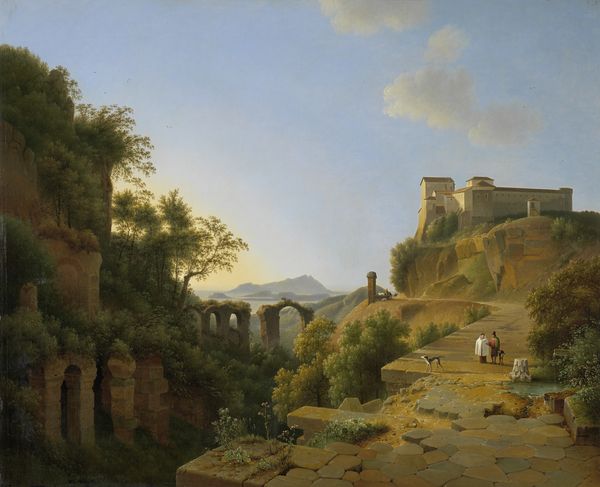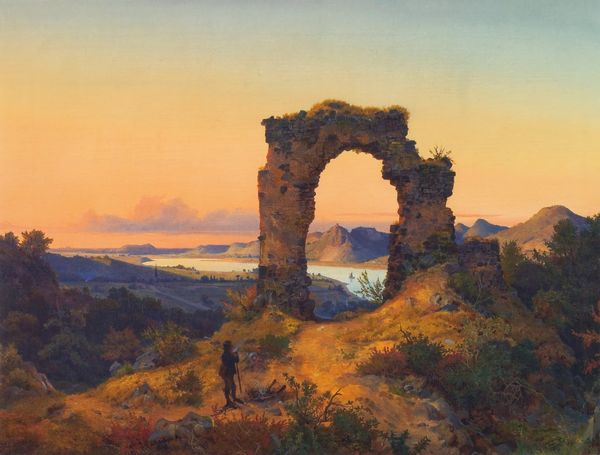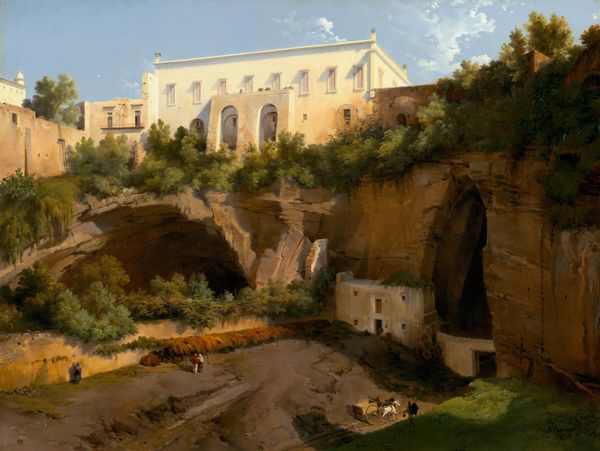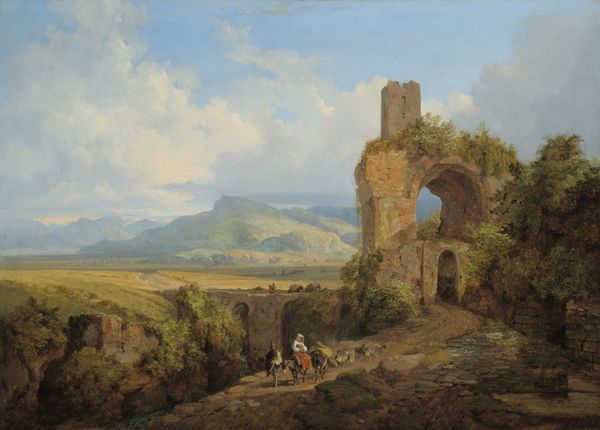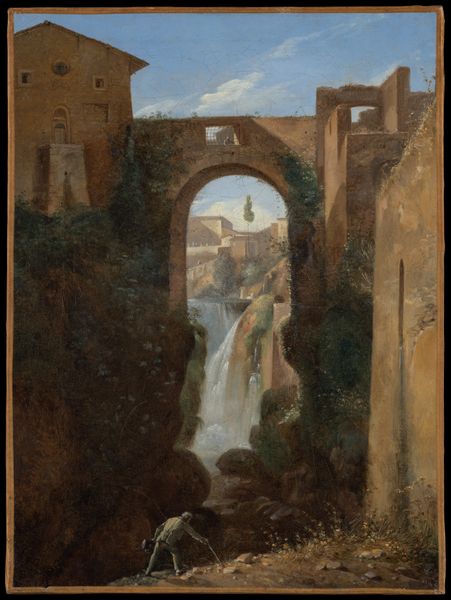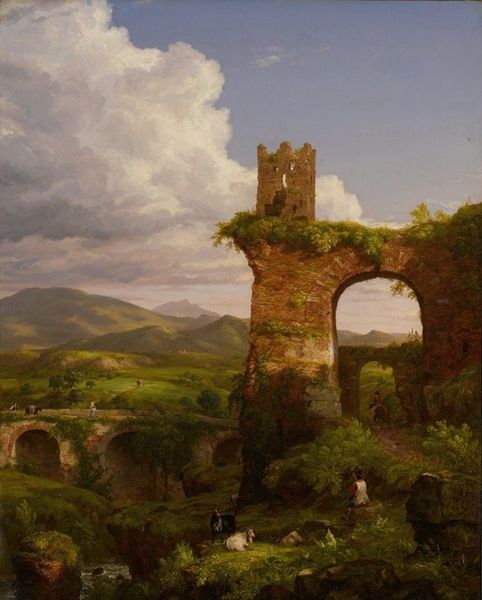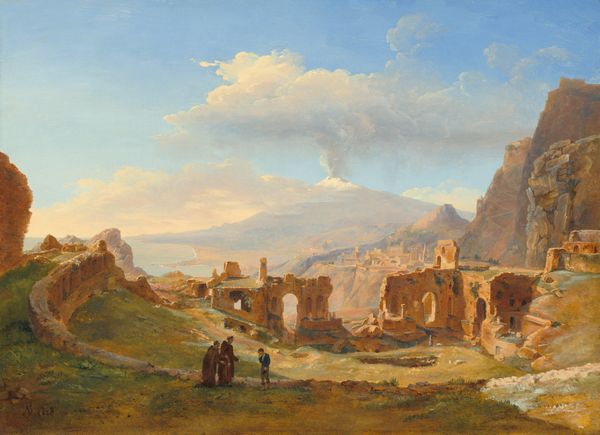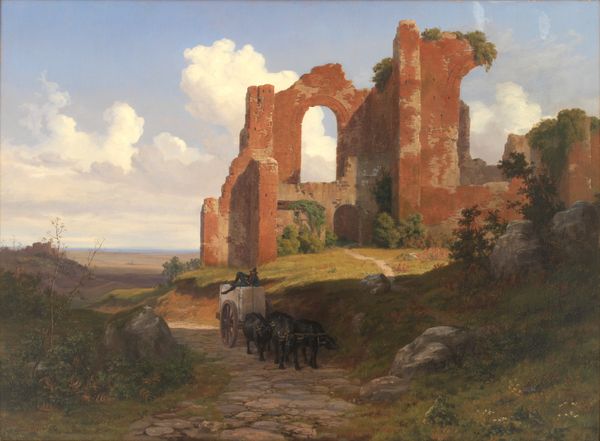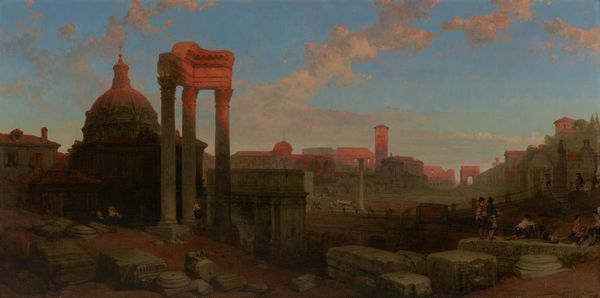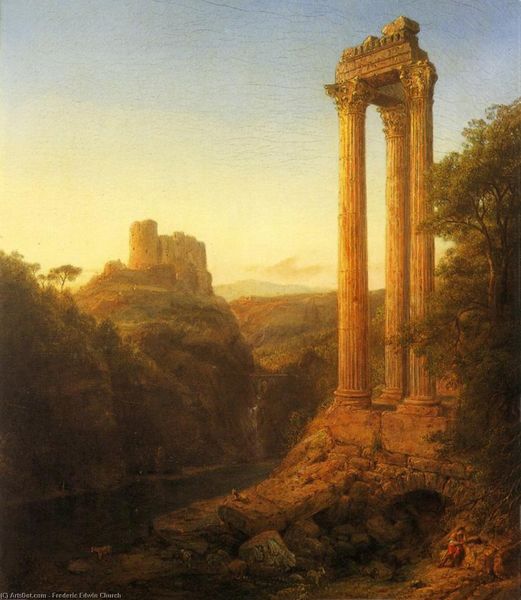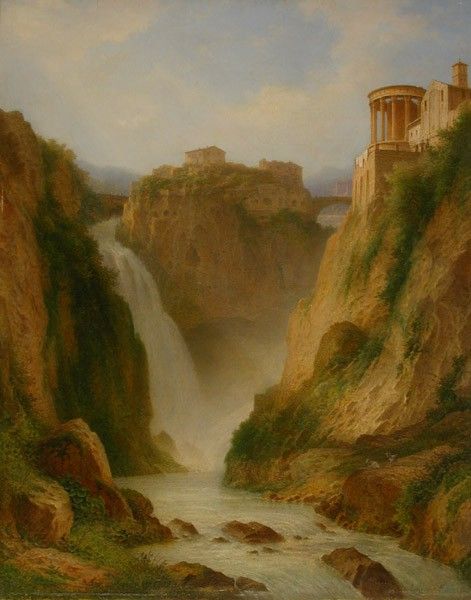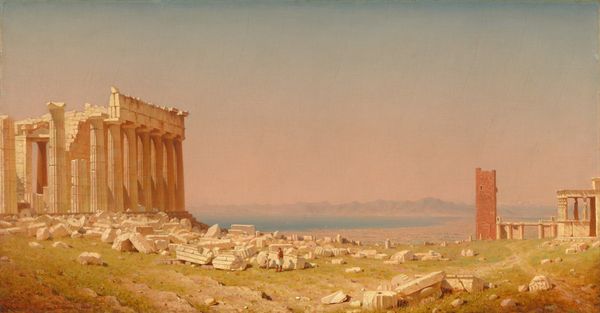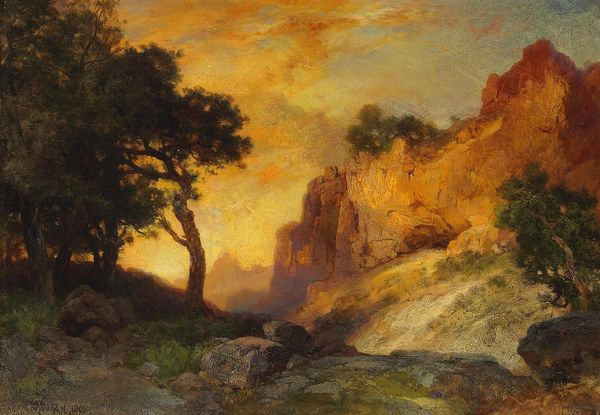
The Ruins of the Aqueduct Aniene Nuovo near Tivoli 1842 - 1847
0:00
0:00
painting, oil-paint, paper
#
water colours
#
painting
#
oil-paint
#
landscape
#
paper
#
oil painting
#
romanticism
Dimensions: 26.5 cm (height) x 27 cm (width) (Netto), 38 cm (height) x 38.7 cm (width) x 5.4 cm (depth) (Brutto)
Anders Christian Lunde painted "The Ruins of the Aqueduct Aniene Nuovo near Tivoli" using oil on canvas. This work encapsulates the 19th-century European fascination with antiquity, framed through the lens of Romanticism. Lunde, a Danish artist, captures the crumbling aqueduct not merely as a historical relic but as a poetic symbol of past grandeur and present decay. Italy, during this period, was a focal point for Northern European artists seeking to connect with classical heritage. The aqueduct, a feat of Roman engineering, is depicted in a state of picturesque ruin. The image invites reflection on the transience of human achievement, a common theme in Romantic art. Artists of the time frequently engaged with the politics of imagery, often contrasting the heroic past with the perceived decline of their own societies. We can research travelogues and letters from the period to better understand how Nordic artists were using Italy to comment on the social structures of their time. Studying these institutions can deepen our understanding of this painting's place within cultural history.
Comments
No comments
Be the first to comment and join the conversation on the ultimate creative platform.

